
Table of Contents
Appliances used to be simple. Buy it, plug it in, take good care of it; and it should last you decades. Nowadays, our appliances and equipment are a lot more advanced, but also incredibly complicated and easier to damage. Today, each of these machines are composed of intricate motherboards, digital displays, and LEDs – all subject to damage from something as simple as a power fluctuation. As such, anything with complex electronics should be treated as carefully as a computer – whether that’s a refrigerator, a flat screen television, or a washing machine – as these are all vulnerable to power damage
For today, we’ll be going into the six most common power problems that you need to protect your appliances from. Once you have a basic understanding of these problems, you can then identify ways to protect your appliances from them
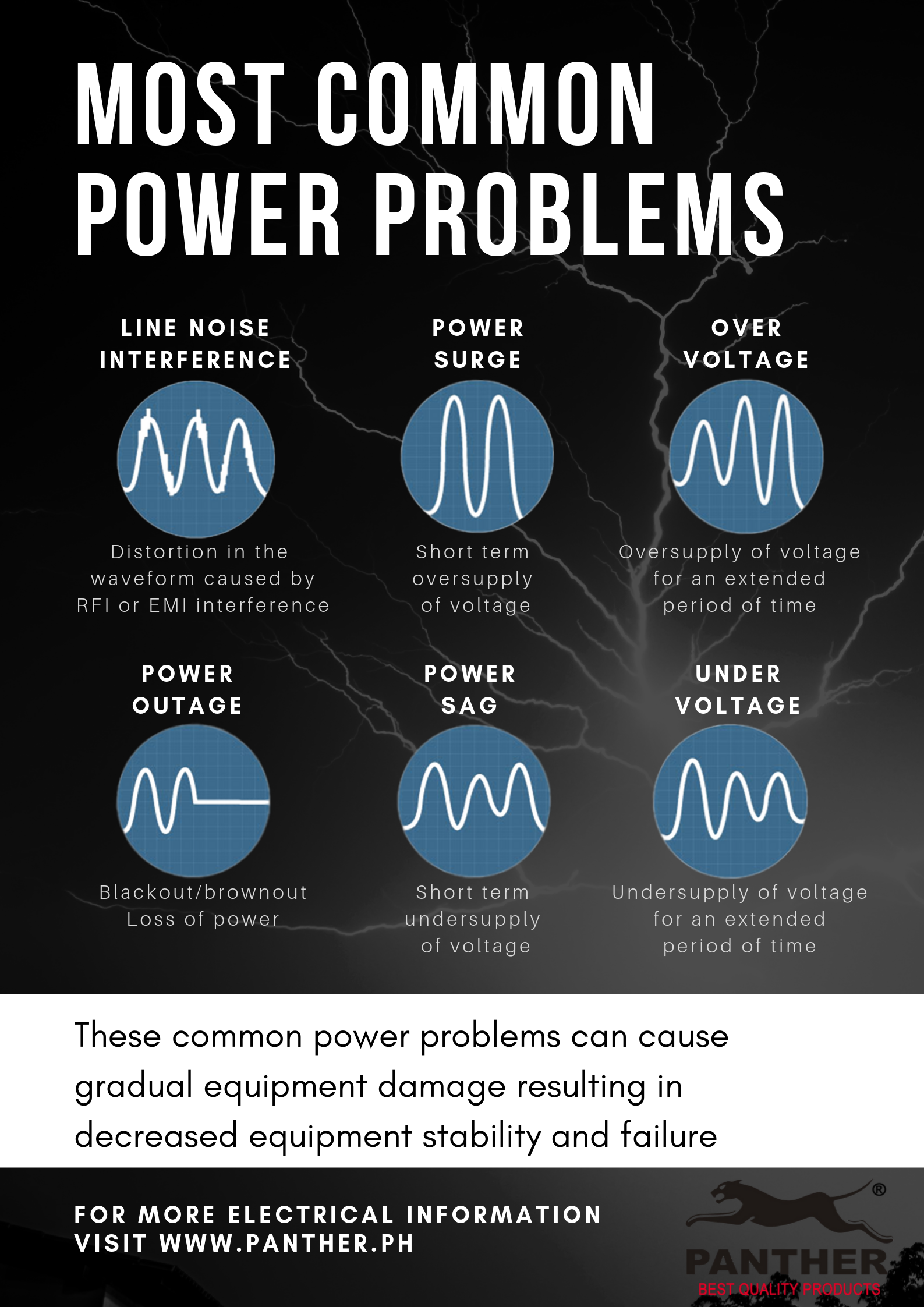
Line noise interference
Line noise interference refers to a distortion on the AC, telephone/modem, network or coaxial lines caused by either Radio Frequency Interference (RFI) or Electromagnetic Interference (EMI) with a variety of sources (both natural and man-made). For example, line noise may result from printers or other peripherals connected to the same extension cord as your stereo system.
Line noise is unavoidable, but not hugely detrimental in a noticeable way, which is why most people aren’t aware of it or don’t bother protecting their appliances from it. However, they do cause incremental electronic circuit degradation, audio/video quality issues, data corruption, and confusion between system components. In fact, you may have heard audio static from your radio or witnessed video snow on your TV screens – that’s line noise interference at play
To protect against this, make sure to plug expensive electronics onto an extension cord with line/noise filter capabilities, instead of a regular power strip or straight into the wall outlet. Panther’s Voltage Surge Protector series all provides line/noise filter protection (link to voltage surge protector products page)
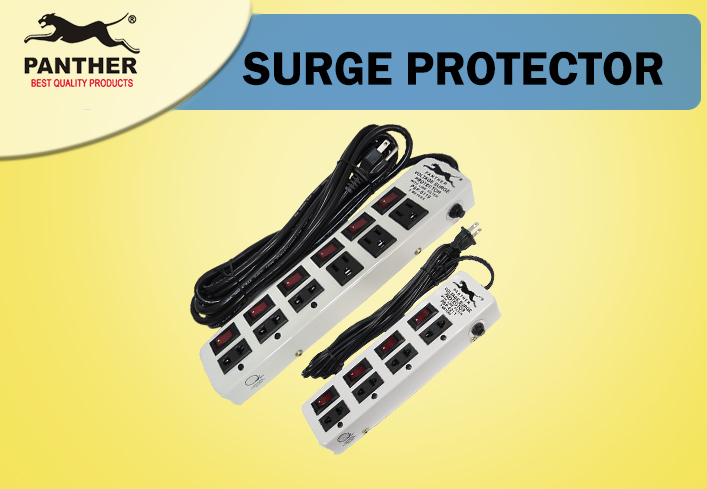
Power surge and voltage spike
Most homes, offices, and factories in the Philippines have electrical wiring with a standard voltage of 220-230 volts. However, there are instances when the voltage provided can exceed 220 volts and this can damage electronic equipment
When the voltage increase lasts less than three nanoseconds, it’s referred to as a spike. If it lasts for longer than three nanoseconds, then it’s considered a power surge. There are many causes for power surges and voltage spikes – ranging from the presence of an industrial factory near your home, utility company load shifting, or old electrical wiring systems
Regardless of the cause, exposing your equipment to power surge and voltage spikes without appropriate protection (e.g., surge protectors, voltage regulators, and UPS w/ built-in AVR) can cause costly equipment damage resulting in shortened lifespan and performance degradation. Panther products that do provide protection from power surge and voltage spikes include Panther Voltage Surge Protector, Automatic Voltage Regulator, and Uninterruptible Power Supply w/ built-in AVR

Overvoltage
Overvoltage are essentially voltage surges that lasts for a longer duration (from minutes to days). Overvoltage can occur due to a sudden oversupply of power from the local utility (e.g., Meralco), or by sudden/large load reductions from nearby industrial factories when they suddenly close down all their machines at the same time, or due to a mistake by the utility company. As is the case for power surges and voltage spikes, without proper protection, your equipment can be damaged resulting in short lifespan, poor equipment performance, overheating and stress on equipment. Panther products that do provide protection from overvoltage include Panther Automatic Voltage Regulator, Manual Variable Transformer, Power-on-Delay, Voltage Protector, and Uninterruptible Power Supply w/ built-in AVR
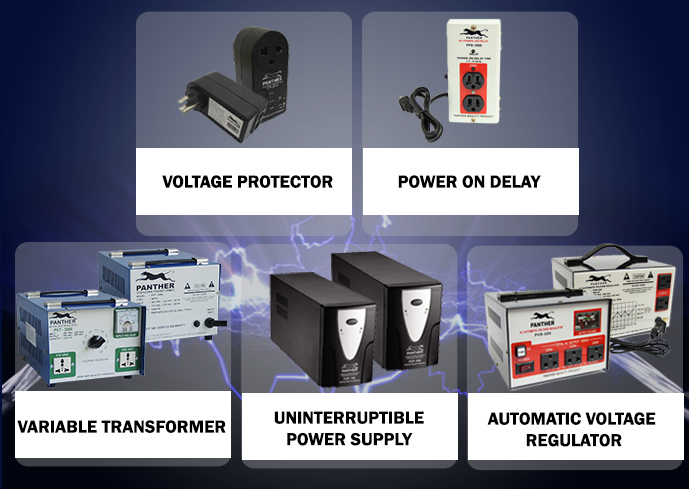
Power sag and voltage deficit
Power sags are short-term undersupply of voltage. Common causes of power sags include heavy power draw by industrial factories in the morning as they fire up all their machines at the same time. Continuous exposure to power sags can cause incremental damage to your equipment resulting in data loss, decreased equipment stability, and equipment failures. For protection against power sags, you can make use of Panther Automatic Voltage Regulator, Voltage Protector, and Uninterruptible Power Supply w/ built-in AVR
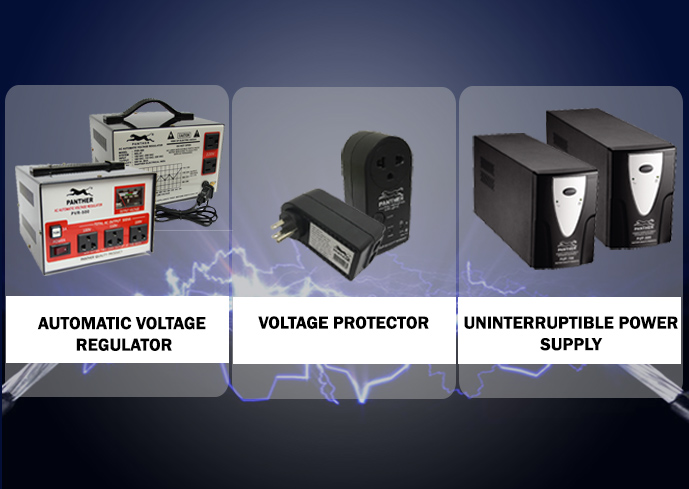
Undervoltage
Undervoltages are long-term undersupply of voltage that lasts for a longer duration compared to power sags (from minutes to days). This is a common occurrence in provinces and island areas, and are often caused by the inability of local utility companies (e.g., Meralco) to supply the power needed by the area given a lack of proper infrastructure. Common protection measures used against undervoltage include the use of Panther Automatic Voltage Regulator, Manual Variable Transformer, Voltage Protector, and Uninterruptible Power Supply w/ built-in AVR

Blackout/Brownout (Power outages)
Ever heard of blackouts or brownouts? I’m sure you have – as they’re pretty common occurrences in the Philippines. There is a difference between the two, but the common denominating factor is that they’re a type of power outage
Brownouts are an all-too-common occurrence in the Philippines, when the need for power exceeds power availability. Whether you live in the metro or the province, we’ve all experienced this phenomenon (usually worse during the summer months!) Brownouts can last for a few minutes, but can also last up to several hours.
Blackouts occur regularly during the rainy season. When a typhoon has hit our shores, this can result in tripped circuit breakers and downed electrical utility lines. Unplanned outages can also occur when aging electrical grids and building circuits are overwhelmed by sudden high demand.
Regardless of the cause, two forms of protection measures you can take would be investing in an Uninterruptible Power Supply, to minimize data loss and damage to devices due to sudden inaccurate shutdown of your equipment, as well as investing in Power Inverters or Inverter Chargers – especially at sites where safety or life support are reliant on the continuous supply of power, such as hospitals and treatment centers



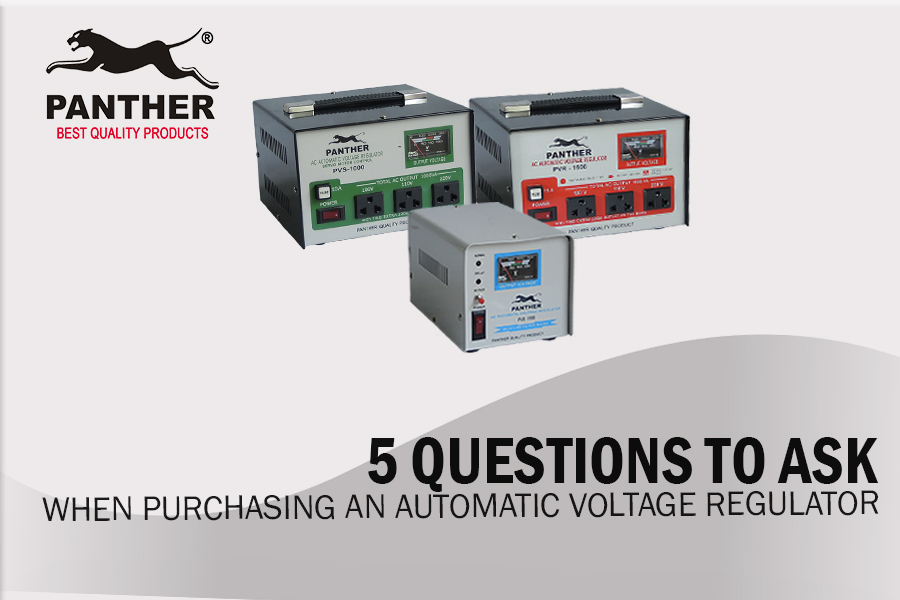

0 Comments